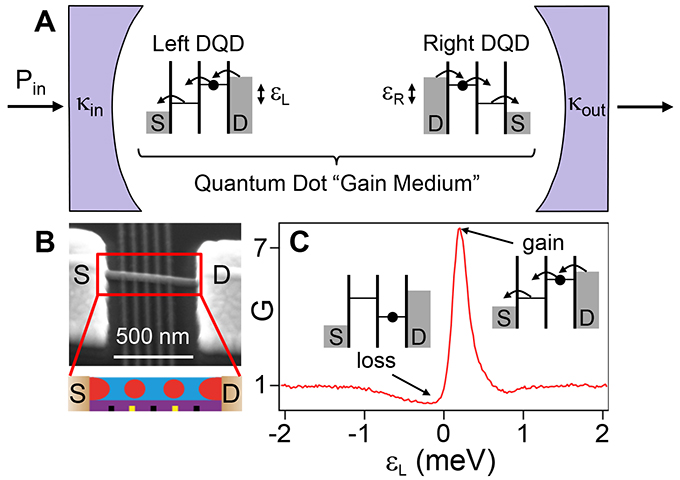A conventional laser consists of three main components: a gain medium, a cavity, and an energy source. Researchers at Princeton and the University of Maryland Joint Quantum Institute have demonstrated a nanoscale laser that is driven by a single electron tunneling events.
The gain medium provides amplification of microwave frequency light and consists of two semiconductor double quantum dots (DQDs). Each DQD is formed in a single InAs nanowire that is only 50 nm in diameter. Current flow in the DQD takes place by single electron tunneling events. Downhill electron tunneling results in photon emission. A superconducting cavity traps these photons, forcing them to interact with the DQD, resulting in stimulated emission.
The double dot maser allows investigations of quantum optical effects at the level of single electrons and photons. In addition, the emission frequency is electrically tunable.
Liu et al., Science 347, 285 (2015)
Provisional patent application filed.

Figure: (A) Two semiconductor double quantum dots (DQDs) are placed in a microwave cavity. Current flow through the DQDs results in photon emission. (B) The DQDs are formed in single InAs nanowires. (C) Current flow through the DQDs results in microwave amplification.